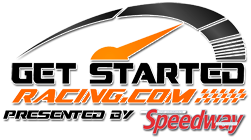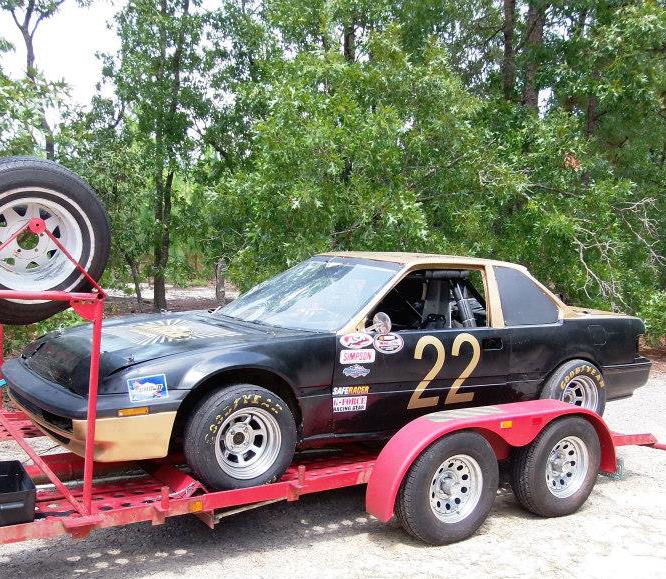Tips for Purchasing a Used Race Car
By Jason Beck and Speedway Illustrated Staff
Rather than building a car, beginner racers may wish to buy used. Here are 10 tips that will help you purchase a solid, pre-owned race car.
1. Establish your Expectations
Someone buying their first race car should have different priorities than would an established, champion racer.
“When you start, you just want to go—you pretty much don’t really care about a whole lot other than making sure it runs, is all complete, you have a couple spare parts and the seat fits you,” says former NASCAR competitor Randy Lajoie. “This day and age, as much as I know about the safety end of it, I tell people to start inside the car. Look at the seat, look at the seat belts, look at the mounting…at the end of the day your safety equipment matters.”
Steve Crane of Day Motor Sports purchased his first racing machine for $800 at the age of 15. He says beginning with something solid and affordable helps potential racers determine whether they enjoy the sport without harming themselves physically or financially.
“Most of us are lapped traffic our first time out…There are very few of us that go out and win our first race,” he says. “Don’t try to be fast right off the bat, but worry more about the safety of it. You can replace the car or have another car built, but you only have one life. Speed will come as you go.”
2.) Know the History
Like using Carfax to purchase an automobile for the street, exploring a race car’s past will provide insight into its quality. Has it been crashed? Was the frame bent? How many times did it race? Was it competitive?
“The history of the car is what I’d look at,” says Todd Schute. “Before I’d even go look at [a car], I’d try to find out as much about it as I could.
“Contact the manufacturer of the chassis, see if they had records on it, if it’d been in for repair or what type of repairs had been done if any at all,” he says.
Pro tip: Look at the welds on the chassis and around roll bars. Is there fresh paint on some areas and not others? This is one sign the car has recently been repaired. Schute says it is sometimes necessary to play detective.
“There is so much on social media these days,” he says. “You can go through [the seller’s] Facebook page; do some creeping on the guy and where he raced. A lot of them say ‘never wrecked and never bent,’ and there may be a picture of the car on its roof.”
3.) Watch it Race
If you purchase a car race ready, you can likely watch it perform before handing over your cash.
“The best way to buy a used car is to hang out at your local short track,” says Joe Constance of Joes Racing Products. “The best time is to buy at the end of the season, because guys are selling the car and upgrading.”
Constance says he stays away from cars that have been idle for years. Rules get updated, and a car that has been sitting in the weeds for several seasons may be obsolete or require major changes to make it legal.
4.) Bring a Trailer
If you watch the car race and like what you see, consider making the purchase at the race track.
“My dad taught me way back to always buy a car at the race track—don’t give [the owner] the chance to go home and change stuff on it,” Crane says. “Guys are famous for taking their junk and putting it on the car and having their good stuff pulled off of it.”
5.) Make a Checklist
Before you hand over your cash, examine the car with a fine tooth comb. Bring a list of items that must be checked.
“Don’t go in there with blinders on; we should almost make a cheat sheet,” Lajoie says. “More often than not, there is always something that could be done better—how the car is built, how the cage is mounted, how the fuel cell is mounted, how the battery is mounted, how the lead is mounted. The main thing is just pay attention.”
Crane, a former tech inspector, says race car construction is not always as it appears from a distance.
“I found one of them that tacked the roll cage together with a stick welder and then took duct tape and wrapped it so you couldn’t see it,” he says. “ I saw a car flip once that had a PVC roll cage in it.”
Most importantly, never be afraid to walk away from a deal.
6.) Find Inner Beauty
Body work is inexpensive, and fresh panels and paint help a car sell quickly. Conversely, a car that is rough around the edges might be a hidden gem.
“The bodies are the easy part; all that stuff can be replaced,” says Performance Bodies’ Chris Marchese. “In all honesty if you are a guy just getting into the sport, and the body on the car is usable and not completely destroyed, I’d run it just to get some experience.”
Marchese says Performance Bodies makes panels that are a direct fit for entry-level cars like ‘80s Monte Carlos and Mustangs.
7.) The Sum of All Parts
Not all race cars are created equal. Name brand, American-made, bolt-on parts may be more expensive than Chinese knockoffs. Consider this before paying full price.
“The quality of the components is what increases or decreases the value of the car,” says Smiley Sitton of Smiley’s performance. “You can take a sprint car, for example, and put together two rollers, and there can be 25 and 35 percent in the difference of the cost because of the quality of the components. That doesn’t mean the cheaper one is going to be a bad deal, but shop around.”
If you are purchasing a car as a roller, ensure the seller is clear which parts are included.
“It is supposedly a roller, but it is missing shocks, axles, or brake calipers,” says Scott Angell of Speedway Motors. “Always check out suspension pieces…All those little pieces that may seem minor are really what adds up.”
8.) Listen to it Purr
If you buy a car race ready, things get a tad trickier. You’ll want a reliable engine that isn’t going to leave your racing career in limbo after your first start. While no method totally ensures engine longevity (even Sprint Cup engines blow sometimes), some tests provide a glimpse at an engine’s health.
“Look at the oil…see if there is any water…look at the oil filter, pull it apart and make sure there is no junk,” Schute says. “Do a leakdown test, a compression test…hear it running.”
Greg Piotrowski, of Yeoman Race Engines, says there are other tests that work, like pressurizing the cooling system, removing the plugs and turning the engine over to check for a blown head gasket. Buyers can also examine the spark plugs, test valve spring pressures, and check the timing with a timing light. A visual inspection also offers clues.
“Look along where the head meets the block, and see if there has been any kind of water leak. Usually a water leak leaves a rust stain,” he says. “Also look at the bottom of the oil pan, make sure no one has beat the oil pan up against the sump tube.”
9.) Splurge on a Seat
Every expert interviewed for this article says a high-quality seat that fits the driver is an absolute must. Full containment seats are even better. If the car you are considering includes an inadequate seat, ask if it can be removed for a break on the price, and purchase your own.
“I definitely think you need to have a full containment seat…even if you have to get a used seat,” Constance says. “It really is important these days. It’s not worth risking your life.”
Angell agrees cockpit safety is the priority.
“The biggest thing everyone talks about is head and neck restraints and a nice seat,” he says. “Buy good safety equipment.”
10.) Don’t Forget the Extras
Crane says potential racers need to understand the sport can be costly, especially when you consider the items needed beyond the car itself.
“The first thing you do is make sure you buy a good firesuit, because no one wants to get burned,” he says. “Get what you can afford, and bump it up a couple hundred dollars. Buy shoes, gloves, and an SA helmet with the most current rating on it. That is all stuff you need to purchase after you buy a car.”
Constance says there are also several tools every racer will need in the toolbox from day one.
“You need an accurate tire pressure gauge and toe plates to make sure the car is square, because you are going to be beating and banging,” he says. “Caster and camber gauges … as you start getting a little more serious, you are going to start checking caster and camber. Those are some of the basic first-step items you are going to have to have.”
And of course racers need a trailer to tow their car to the track. Buying a simple open trailer is one place Sitton says racers can save money.
“My big deal is don’t go and buy a high-dollar trailer. I hate those new trailers with a passion,” he says. “We have all this plain white wrapper crap, it’s a secret what people are pulling down the highway and a huge portion of our fans are missing it.”

